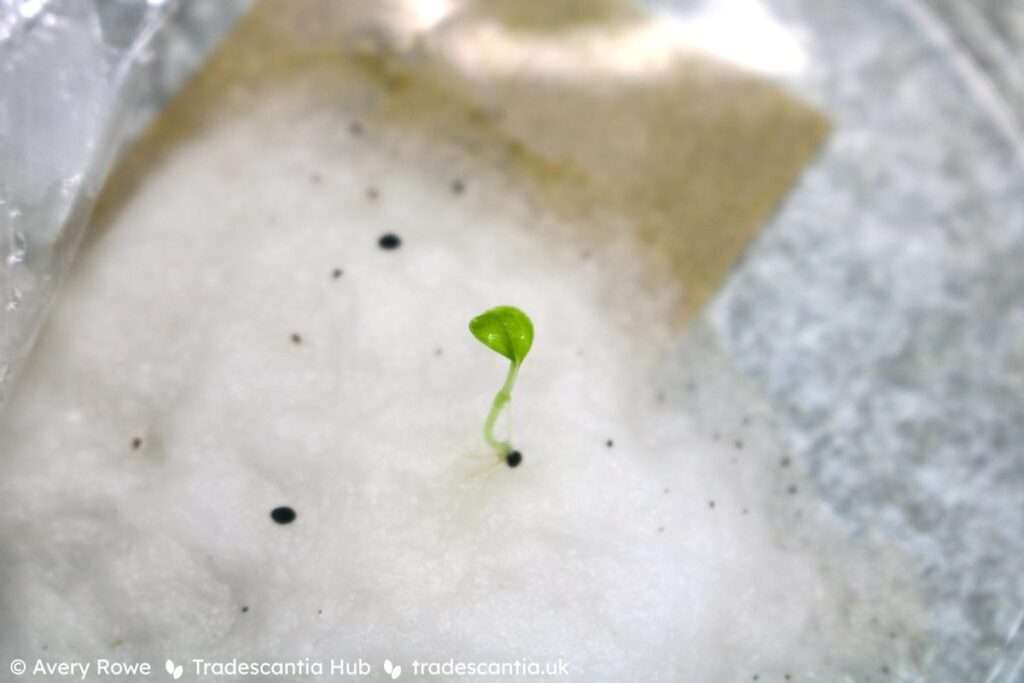How to Grow Strawberries in Arizona: To grow strawberries in Arizona, plant them in the low desert between mid-September and January. Strawberries are popular in backyard gardens due to their ease of growth.
In Arizona, strawberries thrive when planted in the fall, and blooming occurs in March or April for a spring harvest. Proper drainage is essential when using containers without saucers. Controlling weeds and soil quality is easier when growing strawberries in pots.
Avoid planting strawberries near tomatoes, potatoes, peppers, and other plants that may introduce harmful fungi or pests. By following these tips, you can successfully cultivate strawberries in the desert climate of Arizona.
[ez-toc]
Best Varieties To Grow
Choosing The Right Strawberry Varieties
When growing strawberries in Arizona, selecting the right variety is crucial for a successful harvest. Some varieties are better suited to Arizona’s hot and arid climate, while others may struggle to thrive. Here are a few top varieties known to perform well in Arizona:
- Everbearing Varieties: Ozark Beauty and Quinalt are great choices for Arizona as they produce fruits throughout the growing season, providing a steady supply of delicious berries.
- Day-Neutral Varieties: Seascape and Albion are known for their tolerance to heat and are ideal for Arizona’s climate. They produce well in both cool and warm seasons.
- June-bearing Varieties: While June-bearing varieties traditionally have one large harvest in early summer, Chandler and Camino Real have demonstrated adaptability to Arizona’s conditions, making them suitable options.
Ideal Characteristics For Arizona’s Climate
Arizona’s climate presents unique challenges for growing strawberries, requiring varieties with specific characteristics to thrive. When selecting strawberry varieties for Arizona, consider the following traits:
- Heat Tolerance: Look for varieties that can withstand high temperatures and intense sunlight, such as Chandler and Seascape.
- Disease Resistance: Choose varieties that are resistant to common strawberry diseases prevalent in Arizona, including powdery mildew and leaf spot.
- Water Efficiency: Choose varieties that can survive in a drier climate and are less susceptible to water stress, such as Quinalt and Camino Real.
Optimal Planting Conditions
For optimal strawberry growth in Arizona, plant in the low desert during mid-September to facilitate root development before blooming in spring. Use containers without saucers for better drainage in hot desert climates, avoiding standing water to ensure successful growth.
Best Time To Plant
Plant strawberries in Arizona in late summer or early fall for optimal growth.
Roots grow in fall, and blooming starts in March or April.
Suitable Planting Locations
Choose a location with well-draining soil and full sun exposure.
Ensure proper soil pH levels between 5.5 and 6.8 for healthy strawberry plants.
Essential Care And Maintenance
Growing strawberries in Arizona requires proper care and maintenance to ensure healthy plants and a bountiful harvest. By understanding the watering and soil requirements, fertilization and mulching techniques, and protecting the plants from pests and extreme heat, you can create an optimal growing environment for your strawberries.
Watering And Soil Requirements
When watering strawberries in Arizona, finding the right balance is important. Overwatering can lead to root rot, while underwatering can cause the plants to wilt and produce small, dry berries. The key is to consistently provide enough moisture without overdoing it. Here are some tips:
- Water your strawberry plants deeply and regularly, especially during hot and dry periods.
- To prevent leaf diseases, avoid overhead watering. Instead, use a soaker hose or drip irrigation to deliver water directly to the soil.
- Monitor the soil moisture level regularly and adjust your watering schedule accordingly.
- Ensure that the soil drains well to prevent waterlogging.
As for soil requirements, strawberries thrive in well-draining soil rich in organic matter. Here are some important considerations:
- Choose a planting location with sandy or loamy soil that allows excess water to drain away.
- Amend the soil with compost or well-rotted manure to improve its fertility and moisture retention.
- For optimal strawberry growth, ensure the soil pH is slightly acidic, ideally between 5.5 and 6.8.
Fertilization And Mulching Techniques
Proper fertilization and mulching are essential for promoting healthy growth and maximizing fruit production in strawberry plants. Here’s what you need to know:
- According to the package instructions, apply a balanced organic fertilizer, such as a 10-10-10 or 14-14-14 blend.
- Spread a layer of organic mulch around the plants to suppress weeds, conserve moisture, and regulate soil temperature.
- Straw, pine needles, or wood chips are excellent choices for mulching strawberries.
- Replenish the mulch throughout the growing season to maintain its effectiveness.
Protecting From Pests And Extreme Heat
In Arizona, strawberries are susceptible to various pests and the scorching heat of the desert sun. Taking precautions to protect your plants is crucial:
- Inspect your plants regularly for signs of pests, such as aphids, slugs, or spider mites, and take appropriate measures to control them.
- To avoid harmful chemicals, use organic pest control methods, such as neem oil or insecticidal soap, whenever possible.
- Provide afternoon shade to shield your strawberry plants from the intense heat of the Arizona sun. You can use shade cloth or strategically plant them near taller plants or structures.
- Monitor the temperature and take extra precautions during heatwaves by providing additional shade or using shade cloths to protect your plants.
Harvesting And Storing
Learn how to grow strawberries in the hot Arizona climate, including tips on harvesting and storing your delicious homegrown strawberries. Don’t miss out on enjoying fresh strawberries year-round!
Proper Harvesting Techniques
Harvesting strawberries in Arizona requires attention to detail and proper techniques to ensure the best quality and flavor. It is recommended that strawberries be harvested when they are fully ripe to experience their sweet and juicy taste. When picking strawberries, gently lift the fruit upwards and twist it at the stem, being careful not to damage the plant or neighboring fruits. Doing so can avoid bruising and ensure a longer shelf life for your freshly harvested strawberries.
Storing Strawberries For Longevity
After harvesting, it is essential to store strawberries properly to maintain their freshness. Start by carefully inspecting the strawberries and removing any damaged or overripe fruits. Next, consider refrigerating the strawberries in a shallow container lined with paper towels to absorb excess moisture and prevent spoilage. Be sure to store the strawberries in the refrigerator, preferably in the crisper drawer, and consume them within 3-4 days for optimal flavor and texture.
Important tip: To prevent strawberries from becoming mushy, it’s best to avoid washing them until just before consumption. Additionally, consider freezing any excess strawberries for future use in smoothies, jams, or desserts, ensuring minimum wastage and maximum enjoyment of your homegrown strawberries.
Troubleshooting Common Issues
Learn how to grow strawberries in Arizona with these helpful tips and tricks. Discover the best time to plant, the importance of soil, and how to water and fertilize your strawberries for a bountiful harvest. Avoid common issues and troubleshoot problems to ensure successful strawberry growing in Arizona.
Preventing Diseases And Pests
When growing strawberries in Arizona, preventing diseases and pests is crucial for a successful harvest. To keep your strawberry plants healthy and pest-free, it’s important to implement a few key strategies:
- Choose Disease-Resistant Varieties: Opt for varieties known to resist common strawberry diseases in Arizona, such as powdery mildew and botrytis.
- Practice Crop Rotation: Avoid planting strawberries in the same location for consecutive years to reduce the risk of soil-borne diseases.
- Regular Inspection: Keep a close eye on your plants for any signs of pests or diseases and take prompt action if any issues are detected.
- Use Organic Pest Control: Consider employing natural predators like ladybugs and lacewings to control common pests like aphids and spider mites.
- Adequate Air Circulation: Good airflow around the plants can help prevent fungal diseases like botrytis.
Addressing Challenges In Arizona’s Climate
The unique climate of Arizona presents specific challenges when growing strawberries. Here are some practical tips to address these challenges:
- Provide Adequate Shade: Shield your strawberry plants from the intense Arizona sun by providing afternoon shade to prevent sunburn and heat stress.
- Proper Watering Techniques: Implement drip irrigation or soaker hoses to deliver consistent moisture while minimizing water evaporation, especially during hot, dry spells.
- Optimal Soil Management: Use well-draining soil rich in organic matter and regularly check soil pH to ensure it falls within the ideal range for strawberries, typically between 5.5 and 6.5.
- Protect from Frost: In cooler months, cover your plants with frost cloth or row covers to shield them from unexpected frost events.
- Supporting Pollination: To ensure adequate pollination, encourage pollinators such as bees by planting pollinator-friendly flowers near your strawberry patch.

Frequently Asked Questions For How To Grow Strawberries In Arizona
Do Strawberries Grow Better In Pots Or Ground?
Strawberries grow better in the ground for longer plant life, but pots offer better weed control and soil quality.
What Is The Trick To Growing Strawberries?
Plant strawberries in well-drained soil with morning light and afternoon shade. Avoid overwatering, replace plants as needed, and manage pests. In hot climates, plant in late summer for a spring harvest. Consider pots for better control. Use suitable companion plants and avoid bad neighbors to minimize risk.
What To Avoid When Planting Strawberries?
To avoid when planting strawberries: Do not plant near tomatoes, potatoes, peppers, eggplants, or melons, as they can introduce harmful fungi and pests. Additionally, ensure good drainage, avoid overwatering, and select a sunny spot with well-drained soil. Avoid planting in hot desert climates during mid-winter.
How Do You Grow Strawberries In The Desert?
In hot desert climates, plant strawberries in late summer or early fall. Use containers without saucers for better drainage. Water the strawberries regularly and provide morning light and afternoon shade. Avoid overwatering and make sure the soil is suitable for strawberries.
Can I Grow Strawberries In Arizona’s Desert Climate?
You can grow strawberries in Arizona’s desert climate by planting them in late summer or early fall for a spring harvest.
Should I Plant Strawberries In Pots Or The Ground?
Both options have pros and cons. Planting strawberries in pots allows for better control of weeds, soil quality, and drainage. However, planting them in the ground may result in longer-lasting strawberry plants.
Conclusion
To successfully grow strawberries in Arizona, choose the right variety, provide morning light and afternoon shade, avoid overwatering, ensure proper soil quality, and follow smart planting practices. By following these tips, you can easily cultivate vibrant strawberries in the Arizona climate.
Happy gardening!


